English Armor 15th Century
This is my first Completed suit of armor. It was a long, slow process, but I learned a lot. It’s based on English armor from the mid-15th century. It’s fully functional and wearable, made from mild steel.
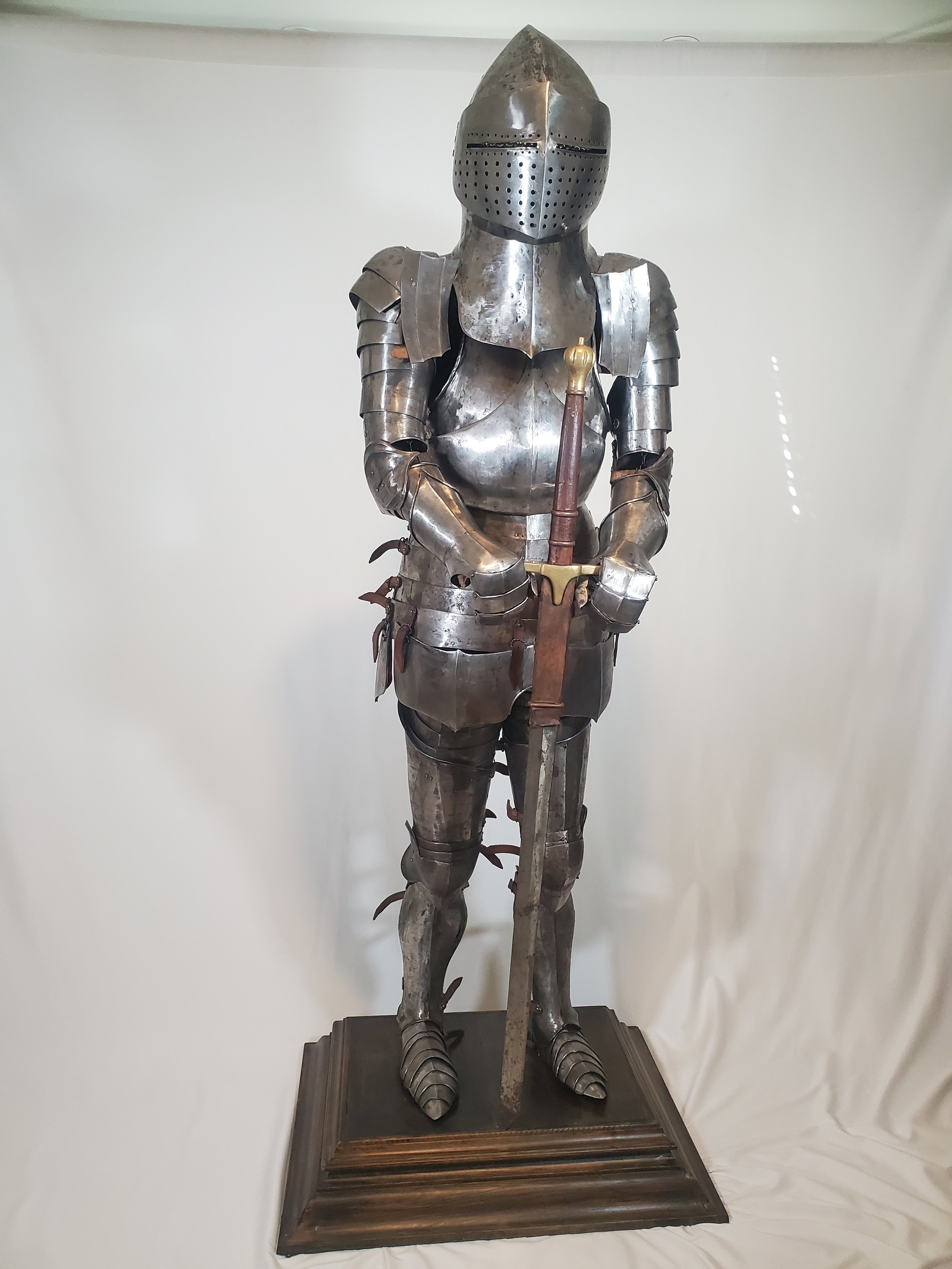
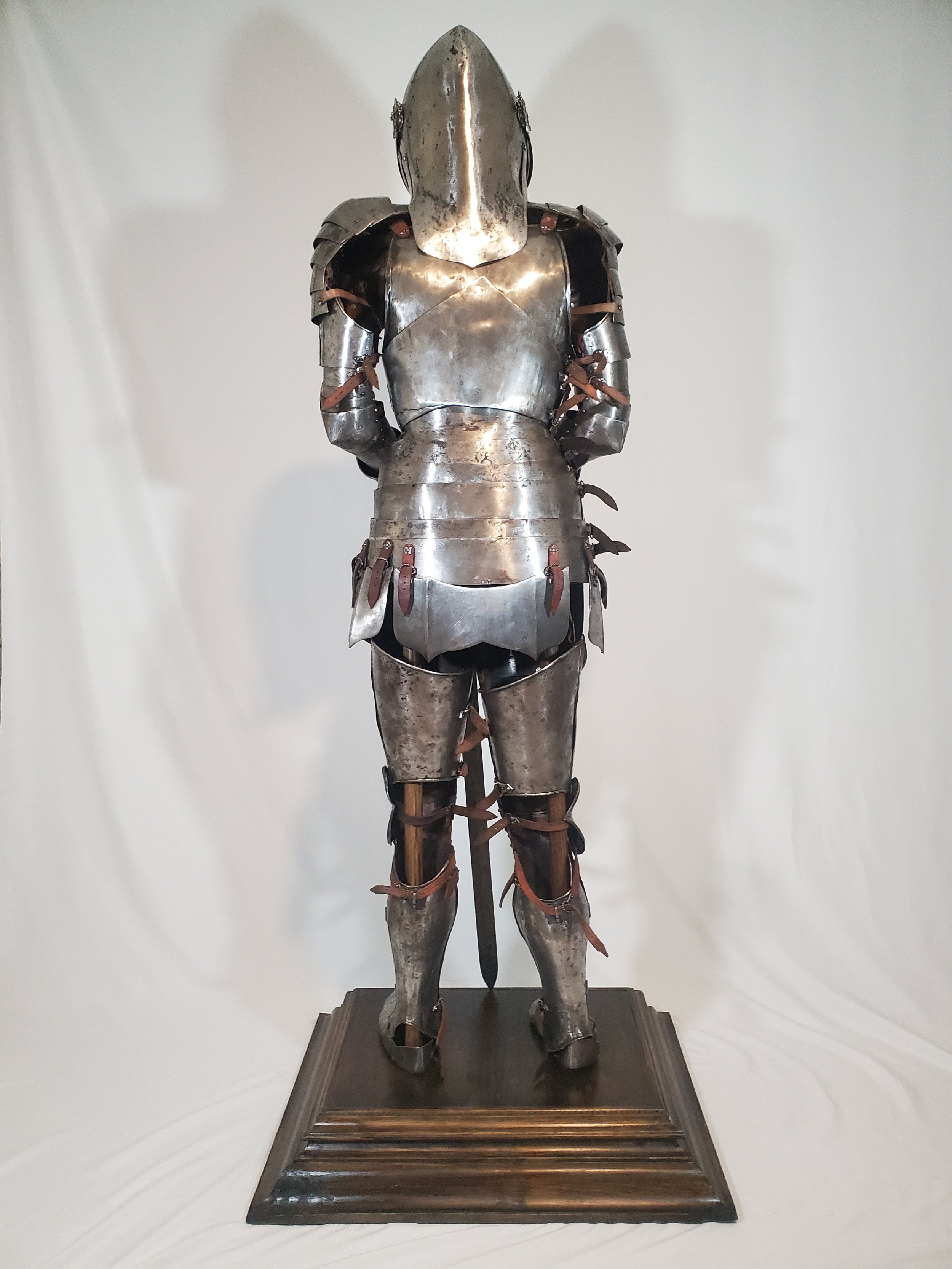
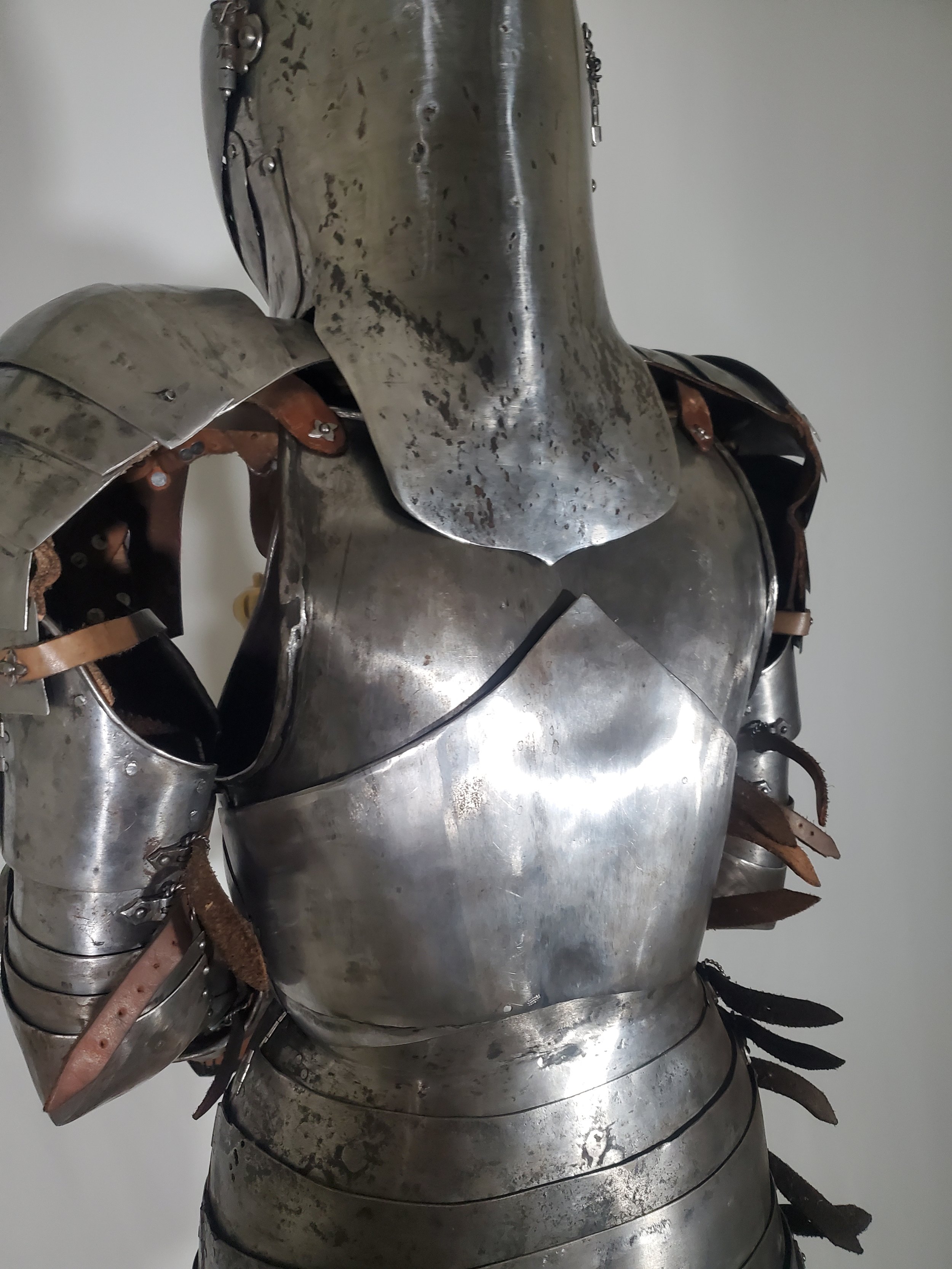
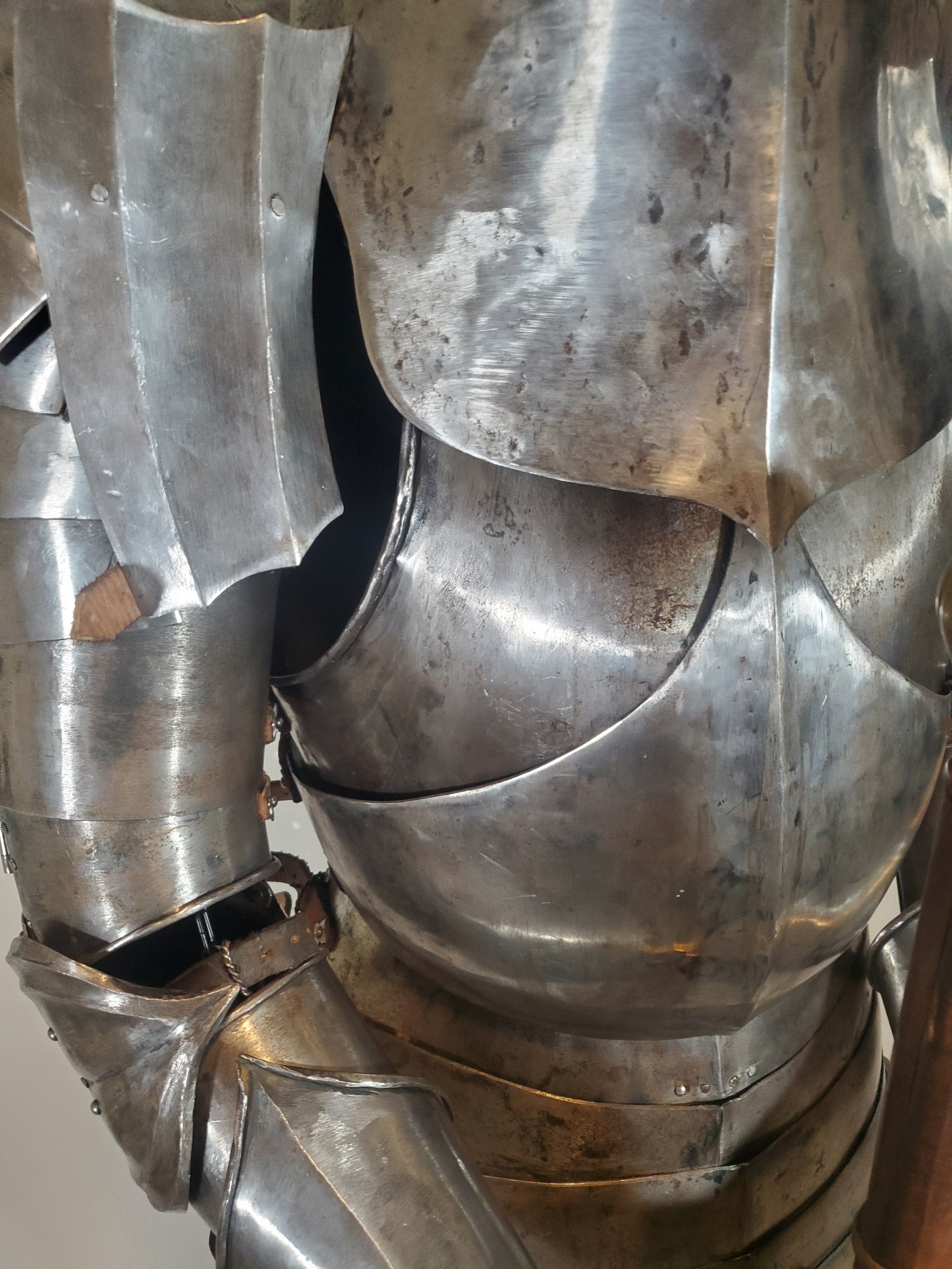
This type of helmet, called a great bassinet sits on the shoulders, and the head moves around inside. Having the helmet away from the head makes it more protective. I used modern padding from army helmets for a liner as a safety precaution.
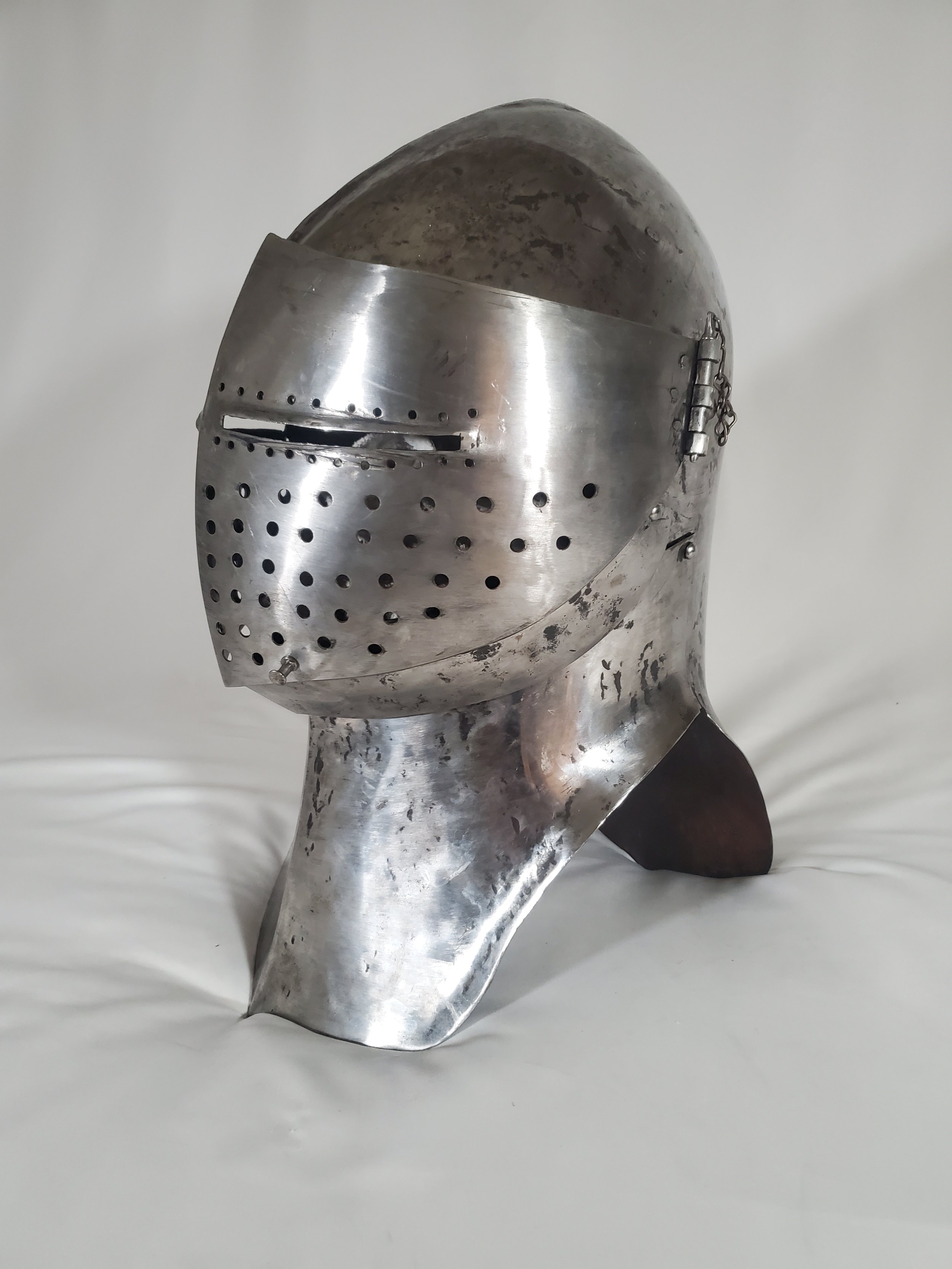
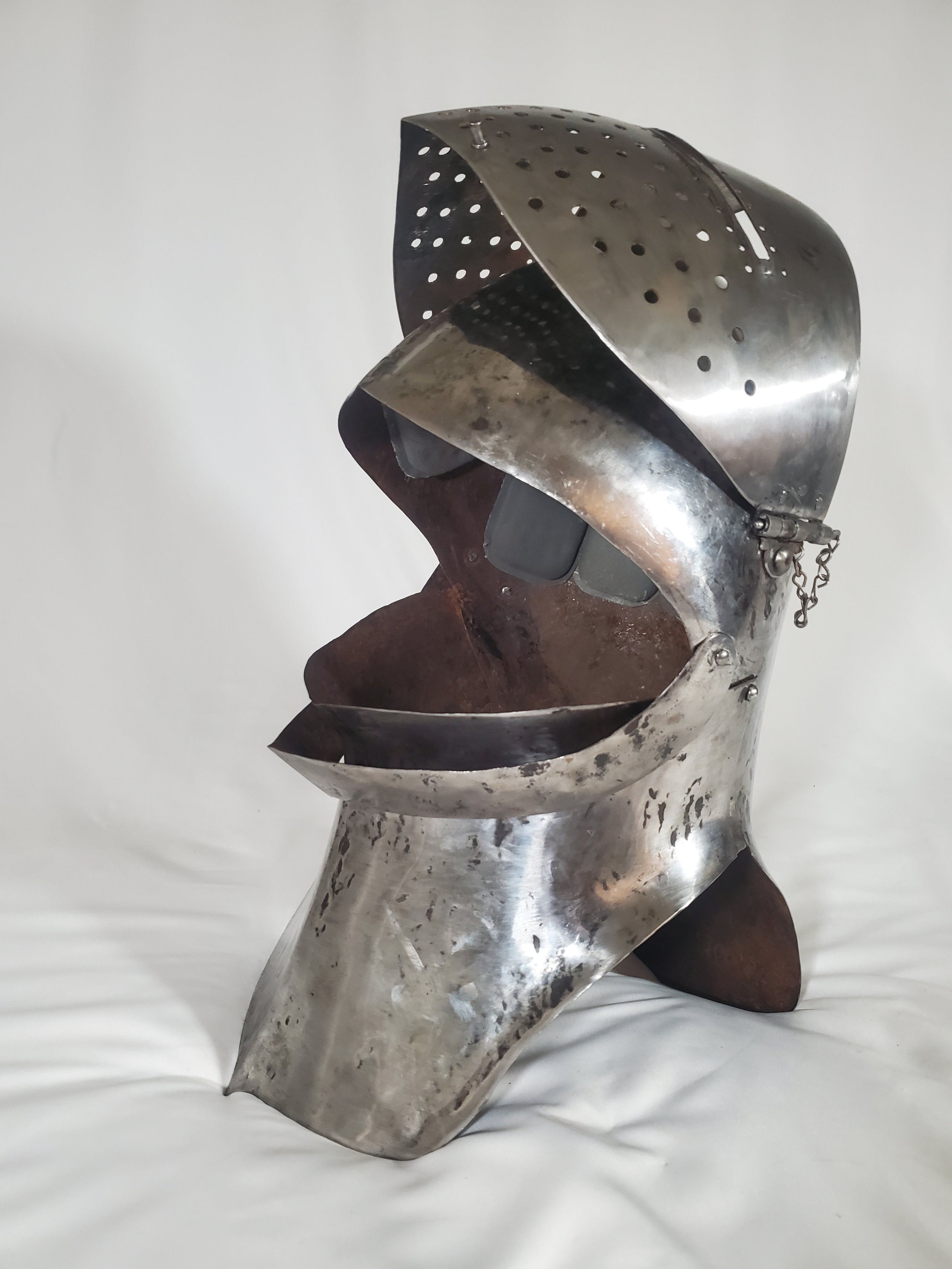
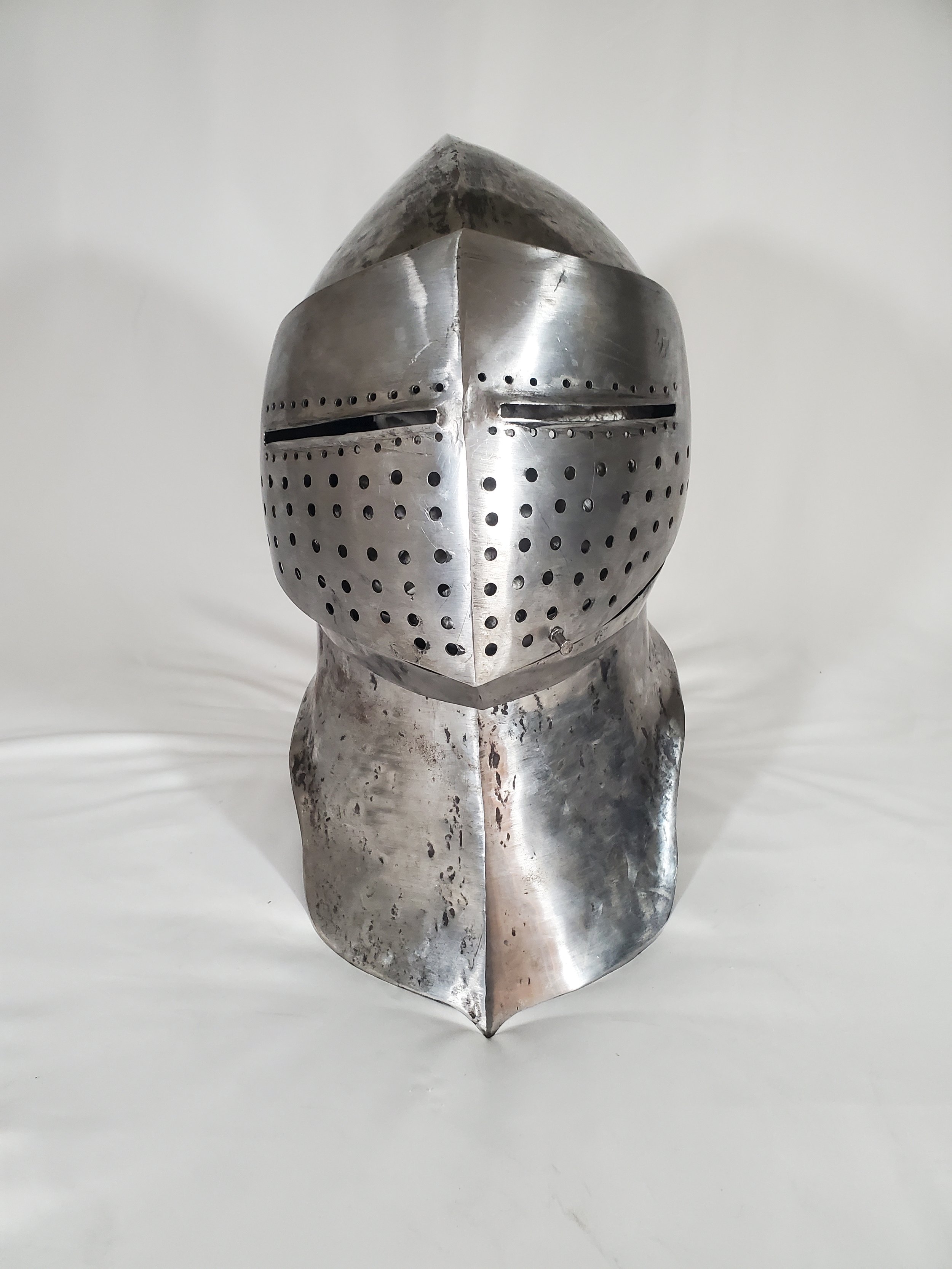
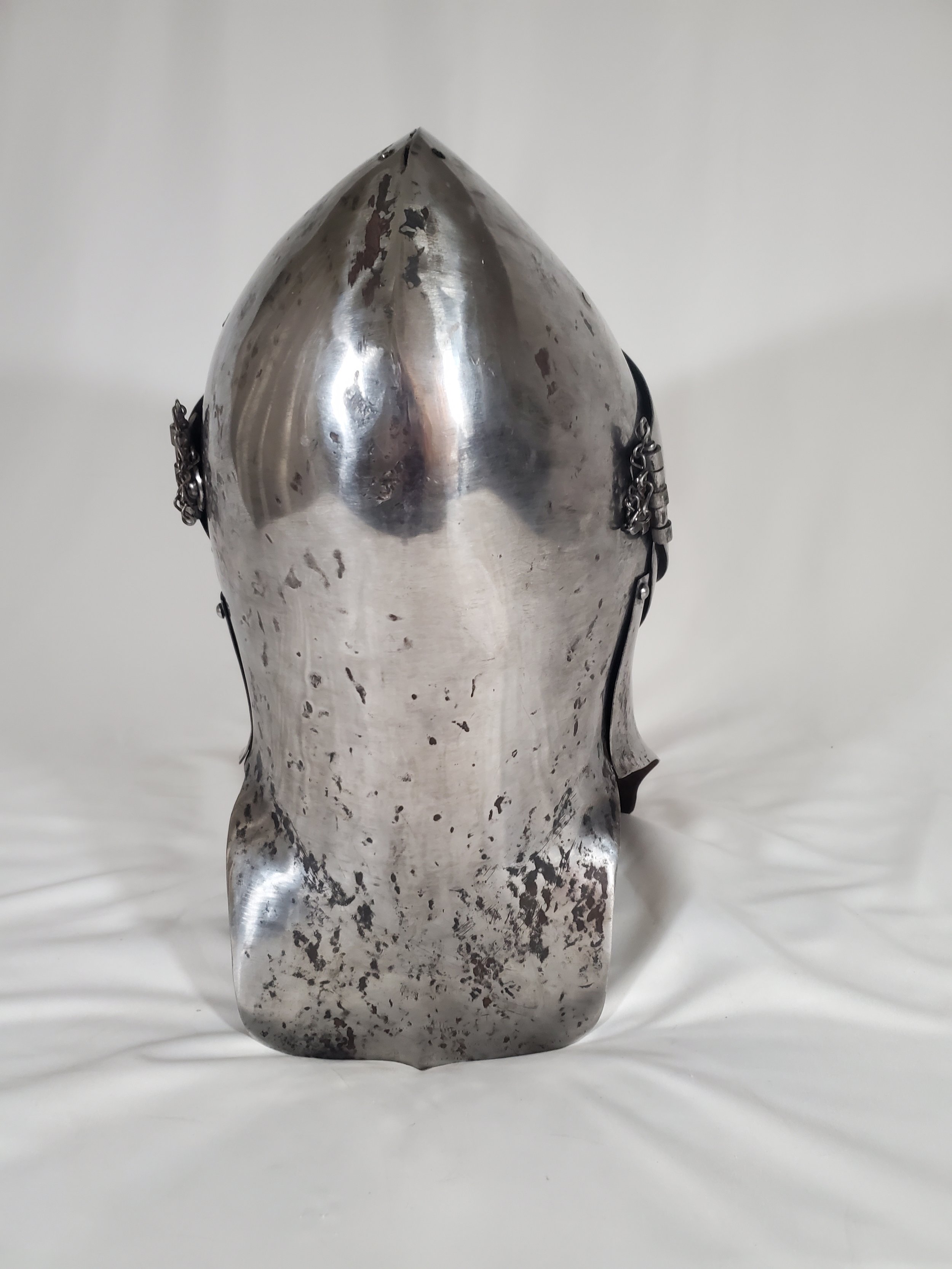
The pins of the hinges can be pulled out, and attached with little chains so they won’t get lost. This allows the visor to be removed and swapped out. Different visors are useful for different types of sports and combat. This visor would be for war or sword fighting.
Mitten gauntlets are less nimble than ones with separate fingers, but they are more protective for blunt trauma. The cuffs are attached by a lip inside the back of the hand so they can swivel a bit. A lot of gauntlets are attached to gloves, these aren’t attached to gloves, so there more versatile. I tend to prefer no gloves so I can feel my sword better.
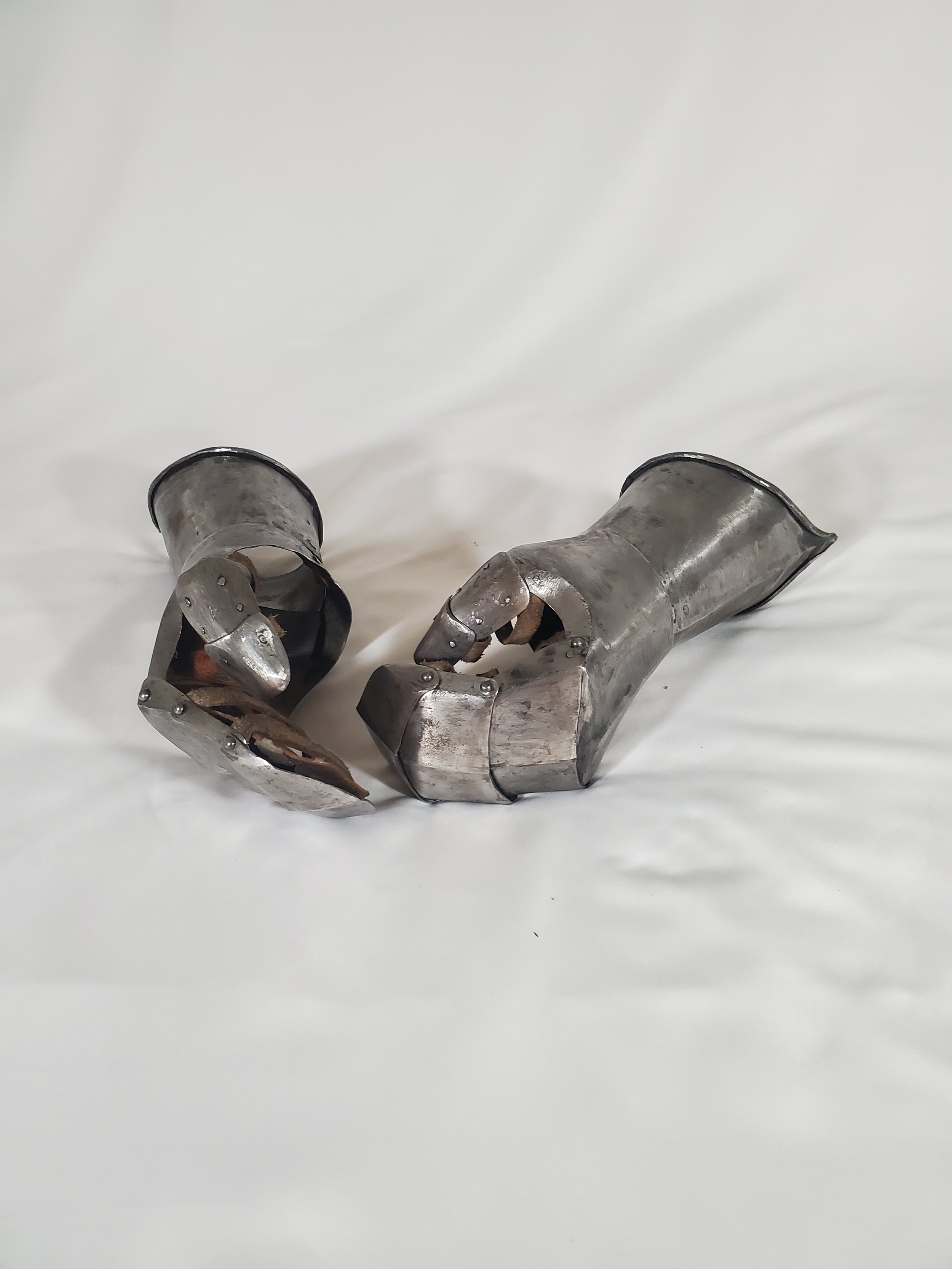
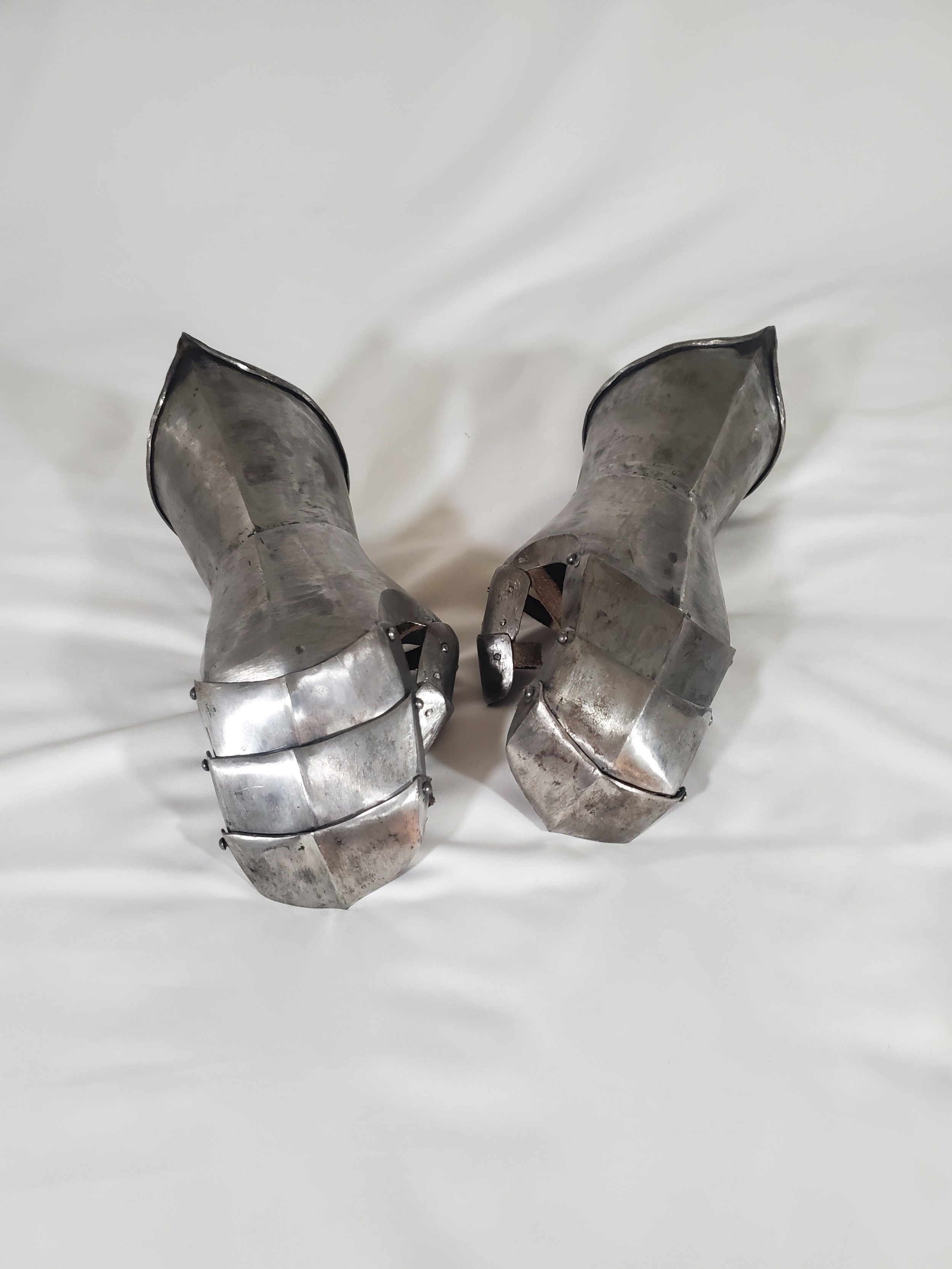
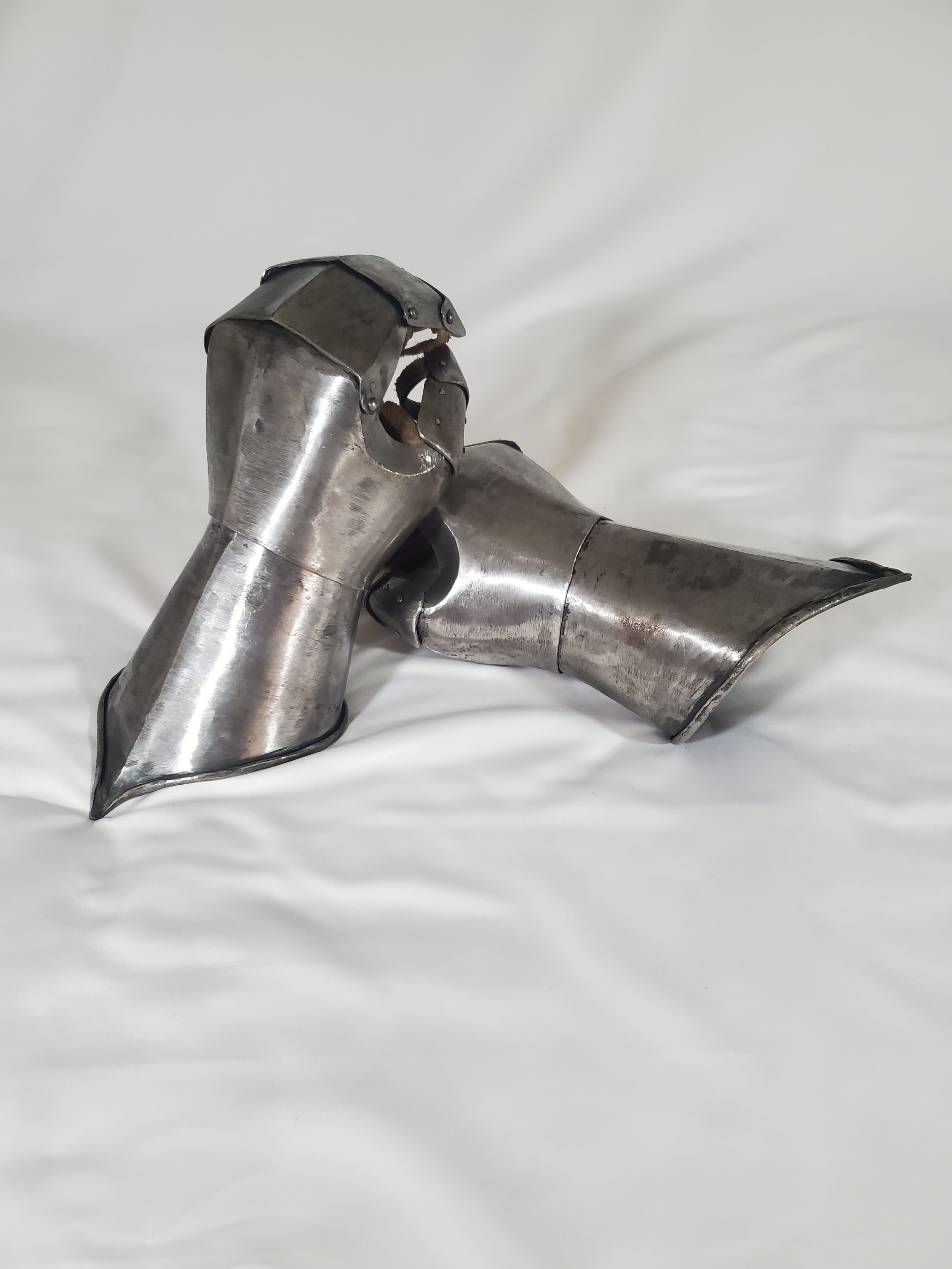
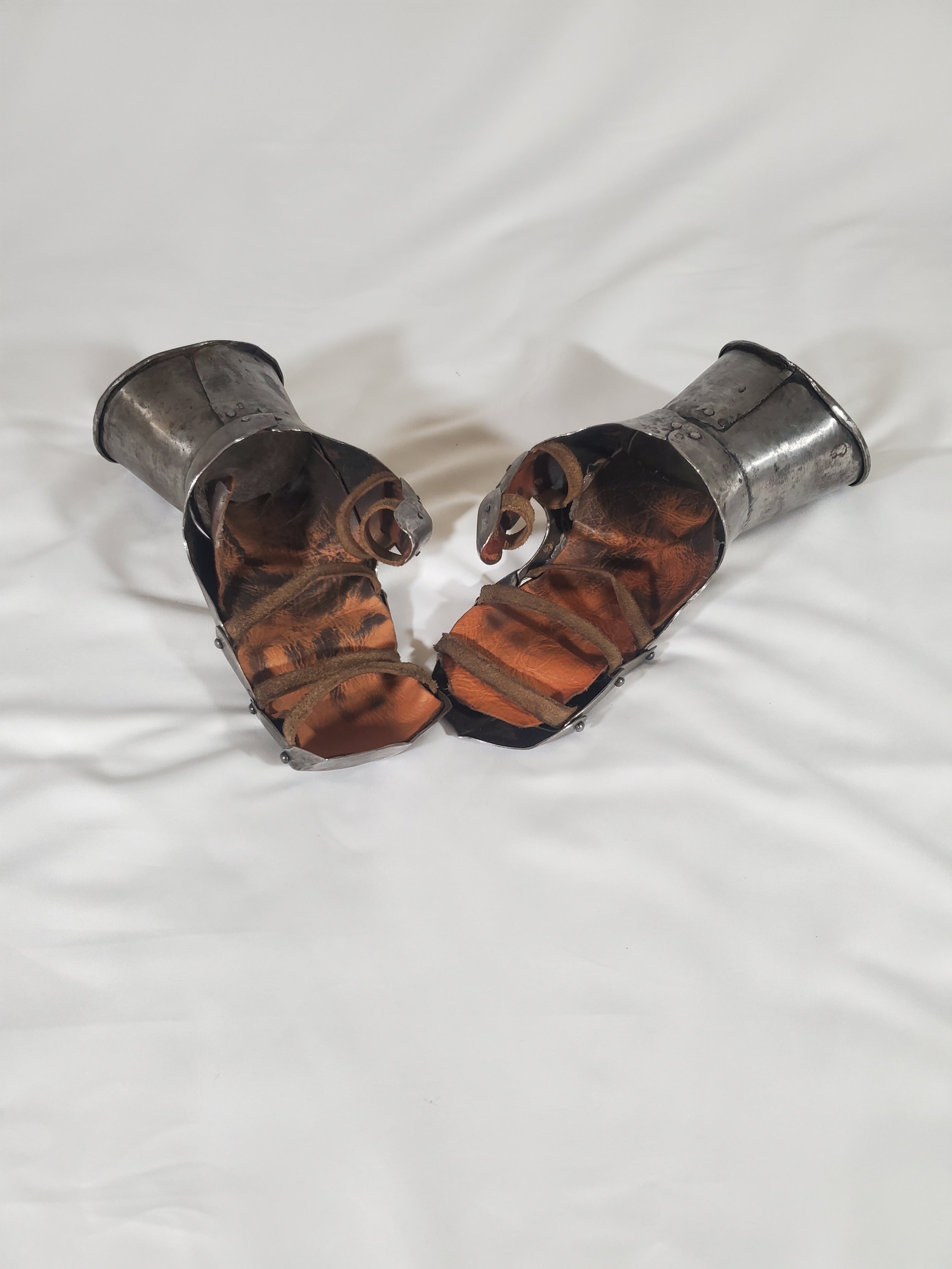
Like the gauntles, the sabbatons(foot armor), have leather straps and can be separated from shoes. The long pointed toes reflect fashions in medieval footwear.
Greaves, (calf armor) are one of the hardest parts to shape. They are usually the most anthropomorphic part of a suit of armor. They need to be almost skin-tight in certain spots in order to stay up
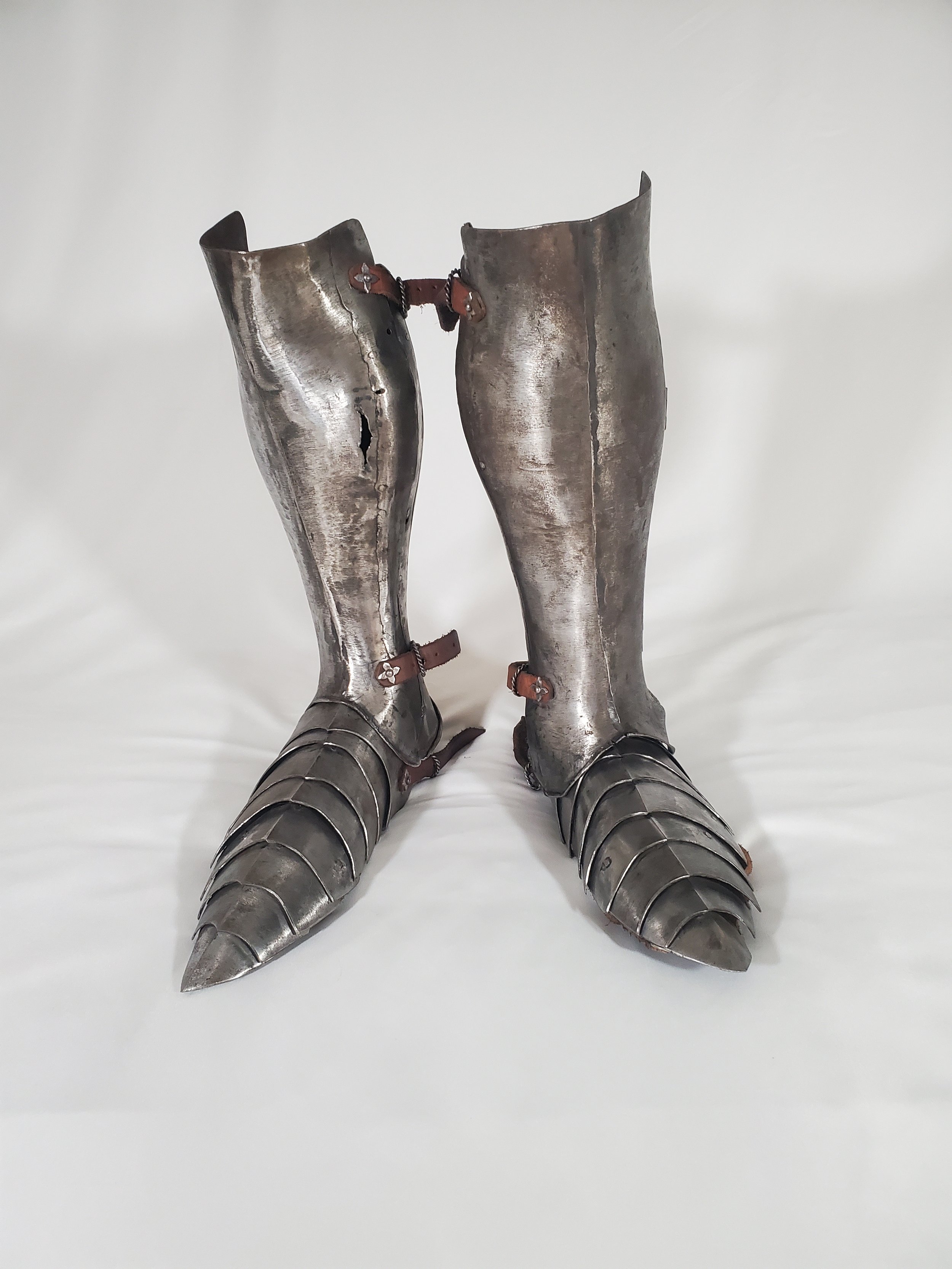
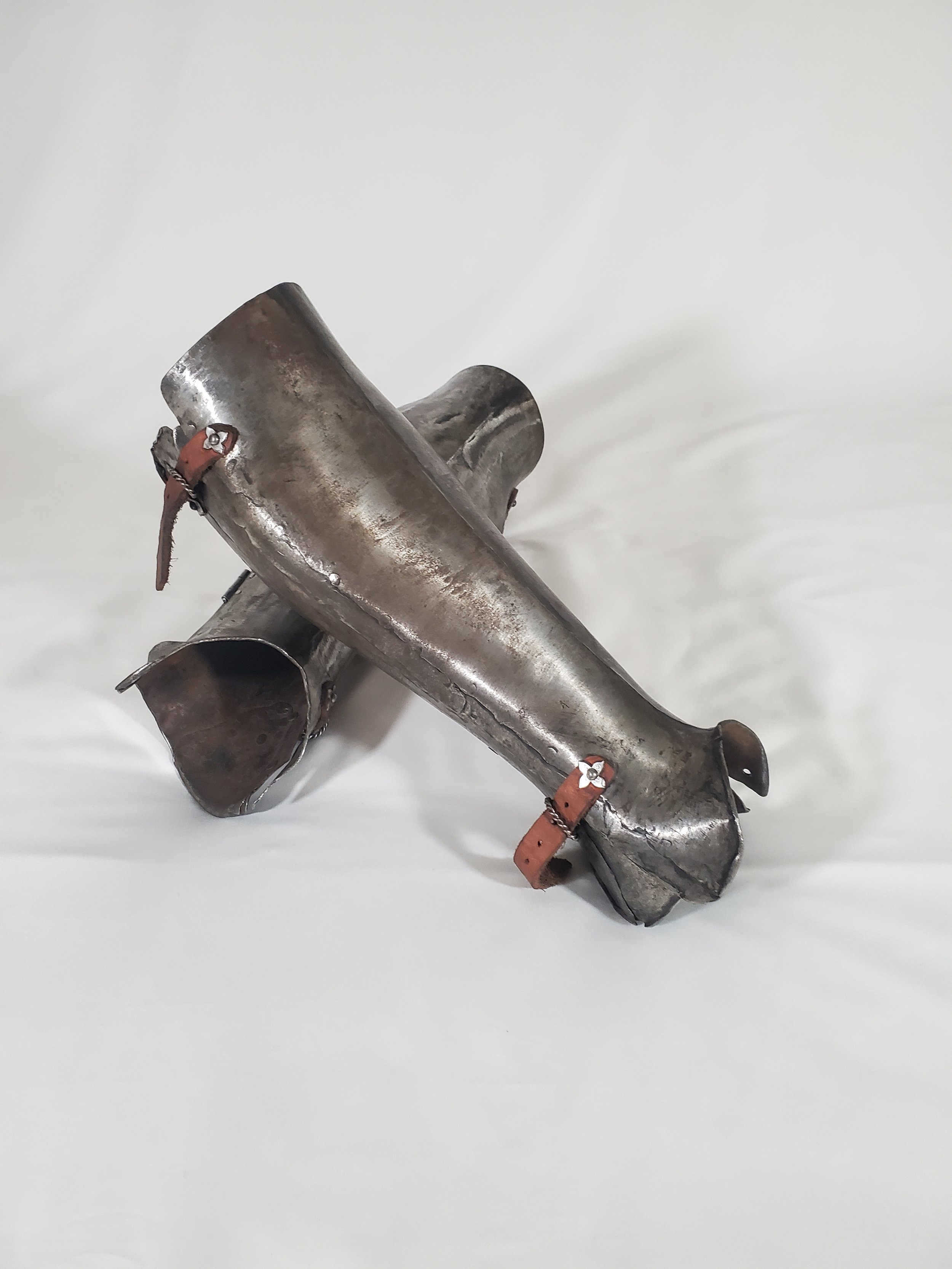
A feature of English armor is the Cuisses (Thigh armor), fully enclose the legs. This is to prioritize combat on foot. Armor intended to fight on horseback has the inside of the thighs exposed so you can better feel the horse. The tops of the cuisses collapse on themselves so you can kneel down or raise your legs.
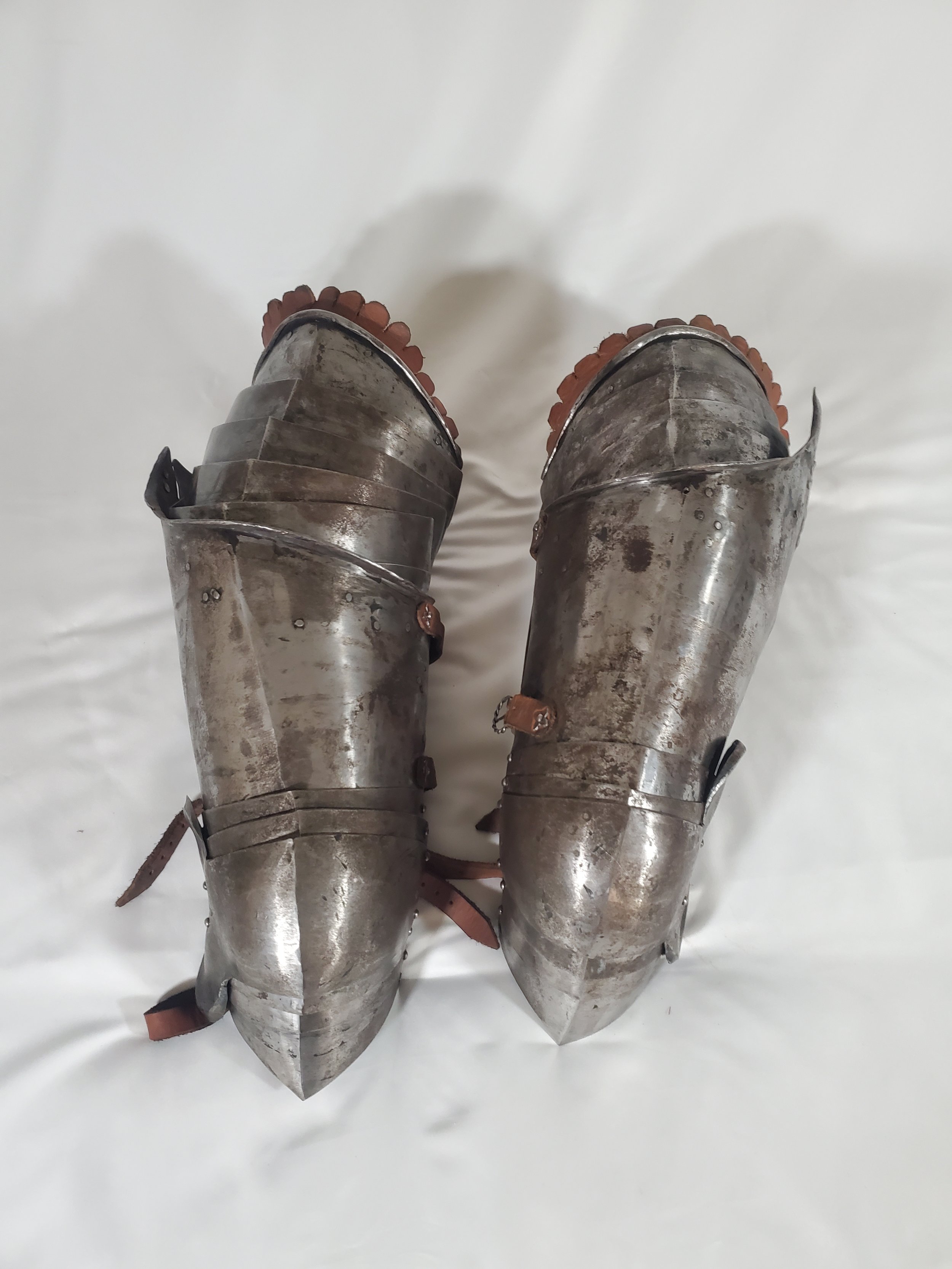
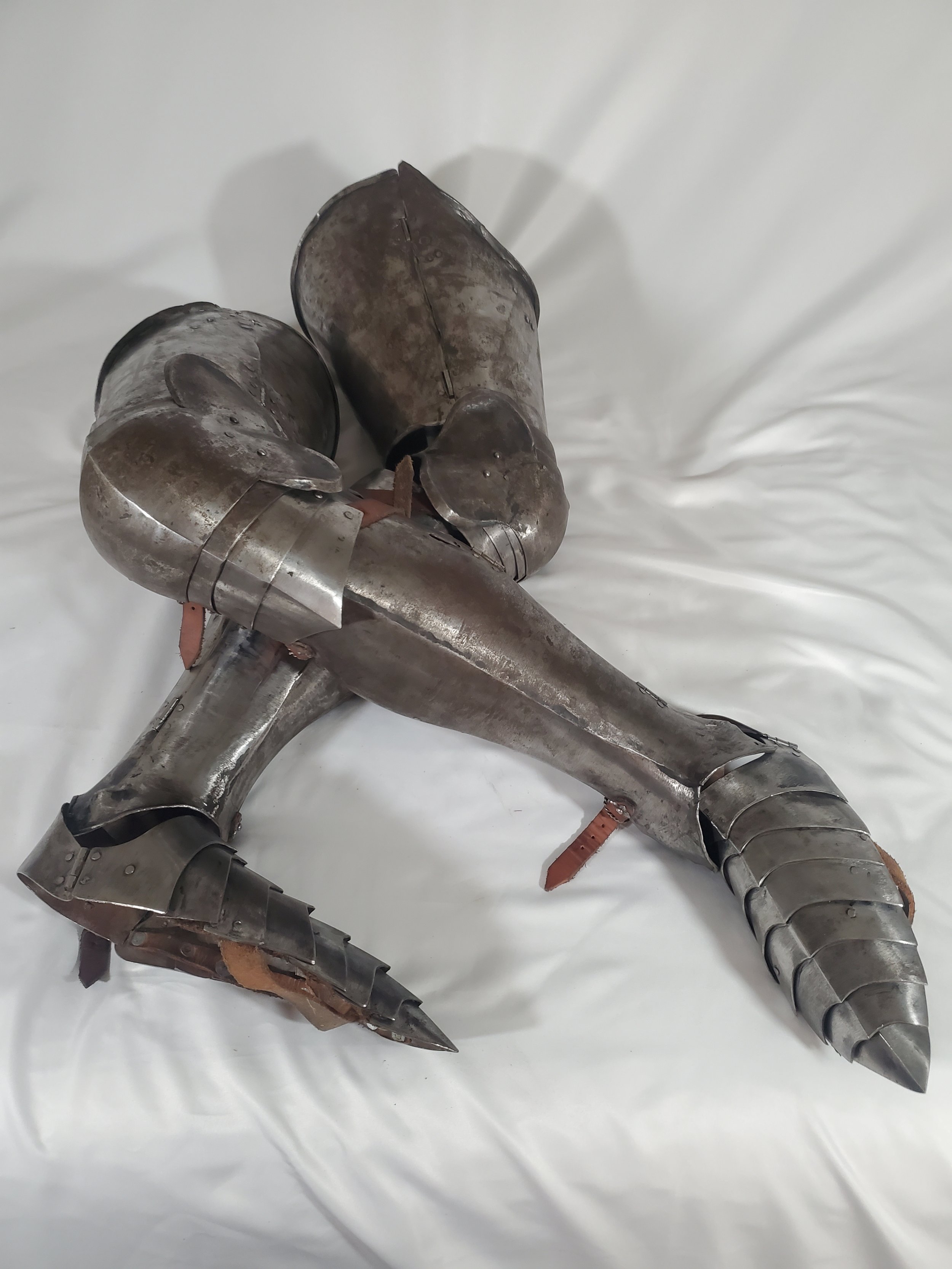
The knees are articulated with loose rivets that allow the different parts to pivot. The fans on the sides are there to block blows that would wrap around and hit the back of the knees, a hard part to cover in armor.
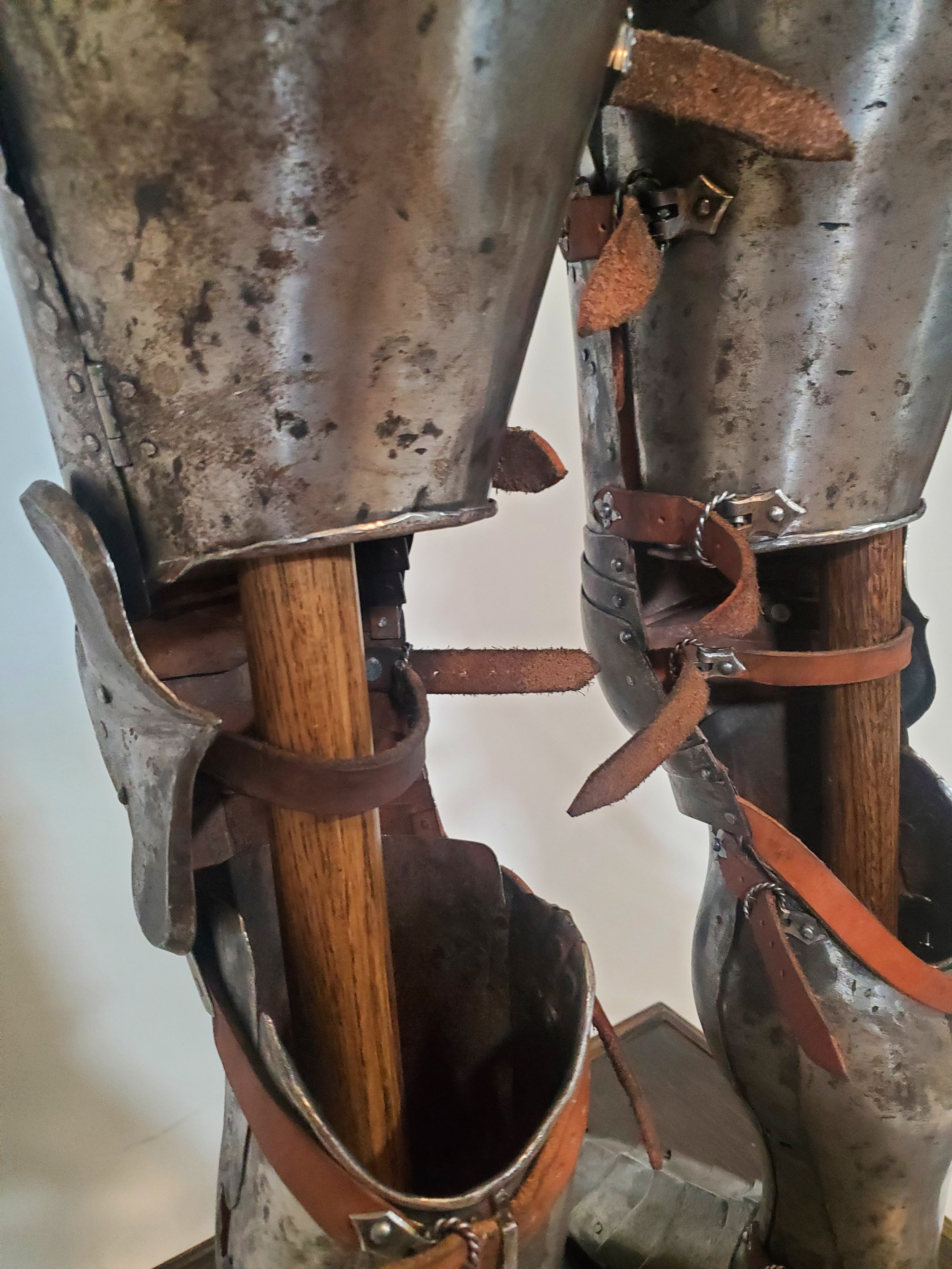
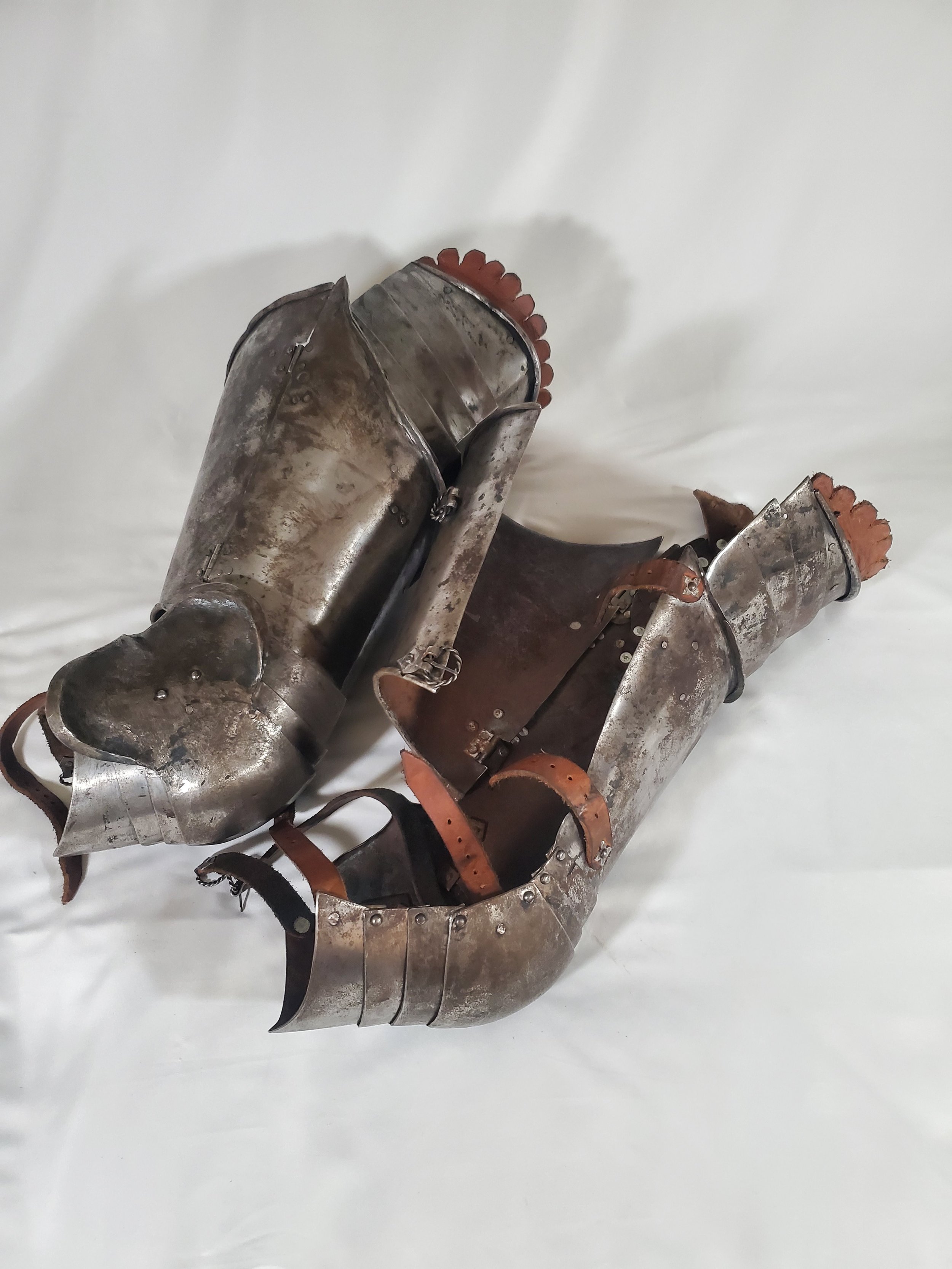
Besagews are little shields that hang in front of the gaps in the armpit. The insides of joints are difficult to protect with armor, particularly the armpit.
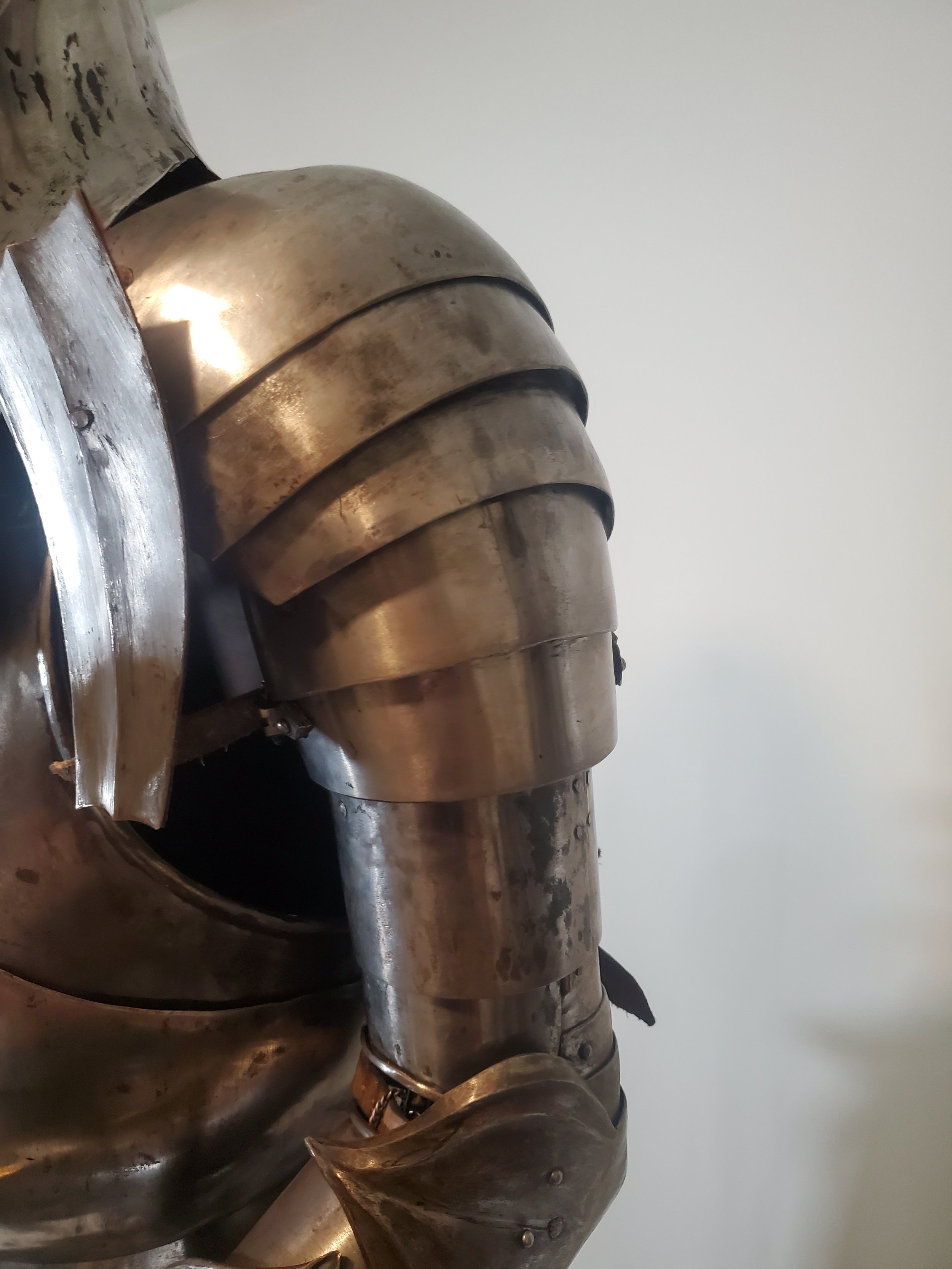
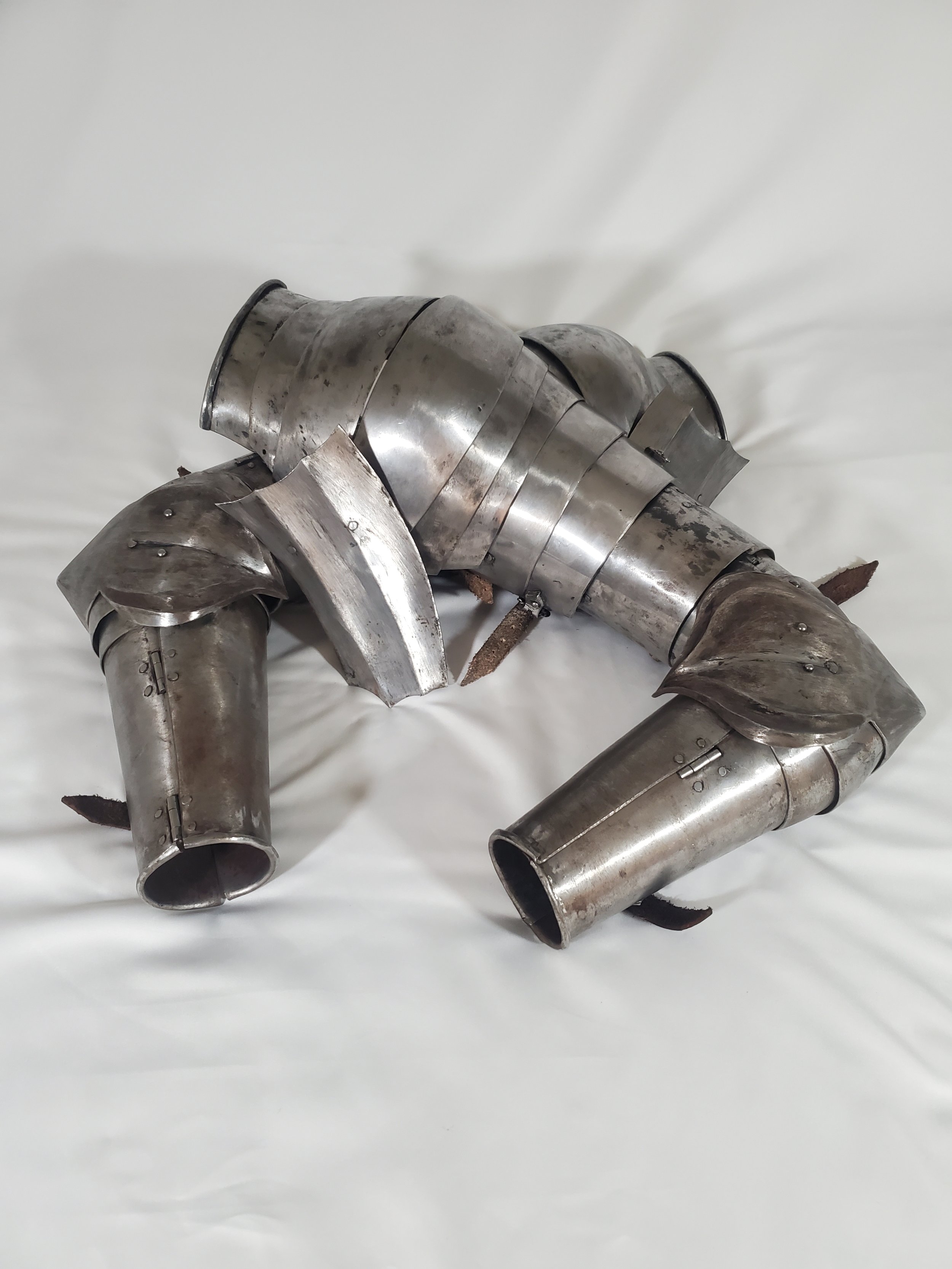
Much of the movement in armor comes from rows of steel strips called lames connected by flexible strips of leather. The spaulders (shoulder armor) are a series of metal strips attached with leathers that go from the neck, over the shoulder, down to the upper arms.
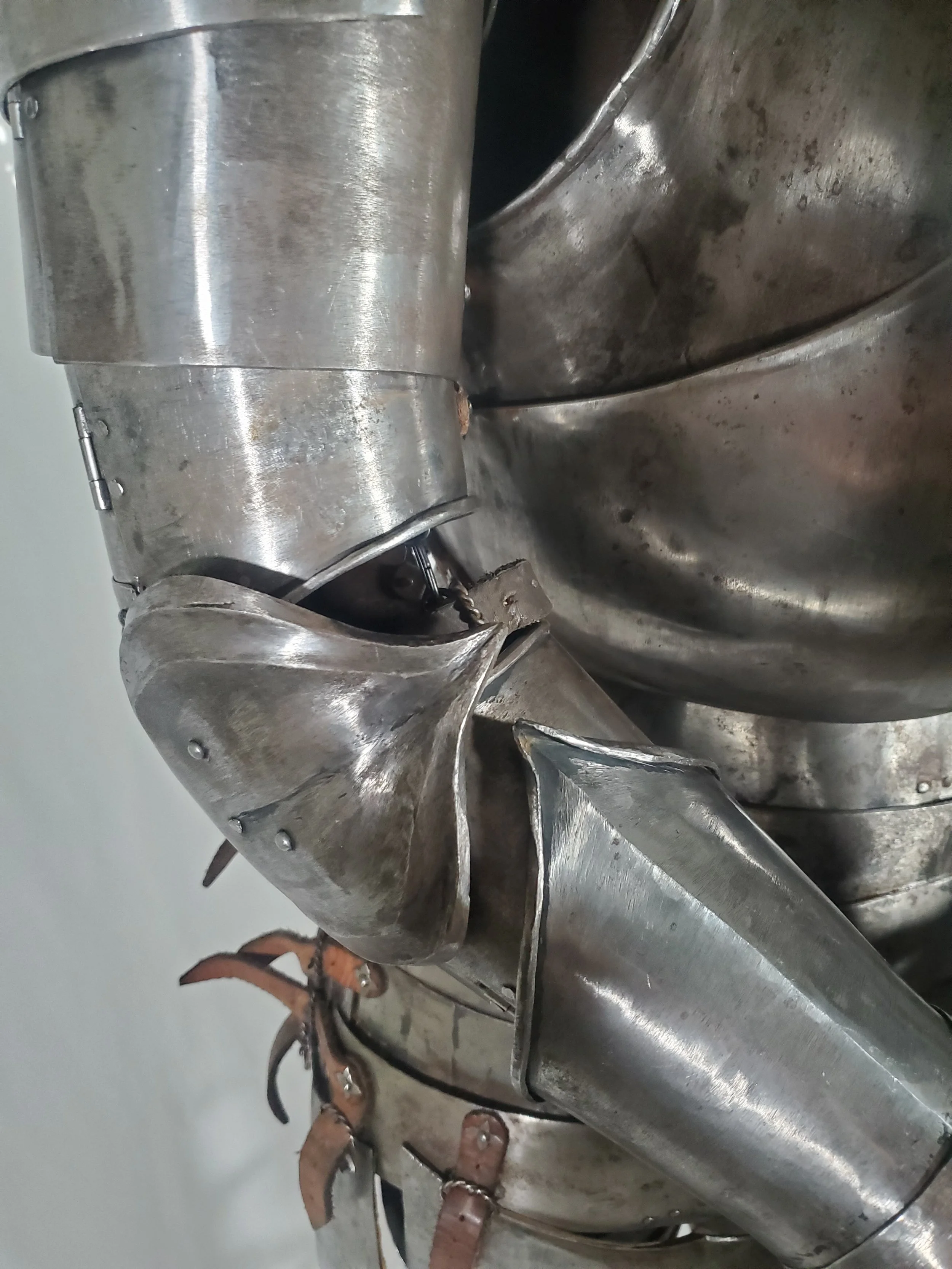
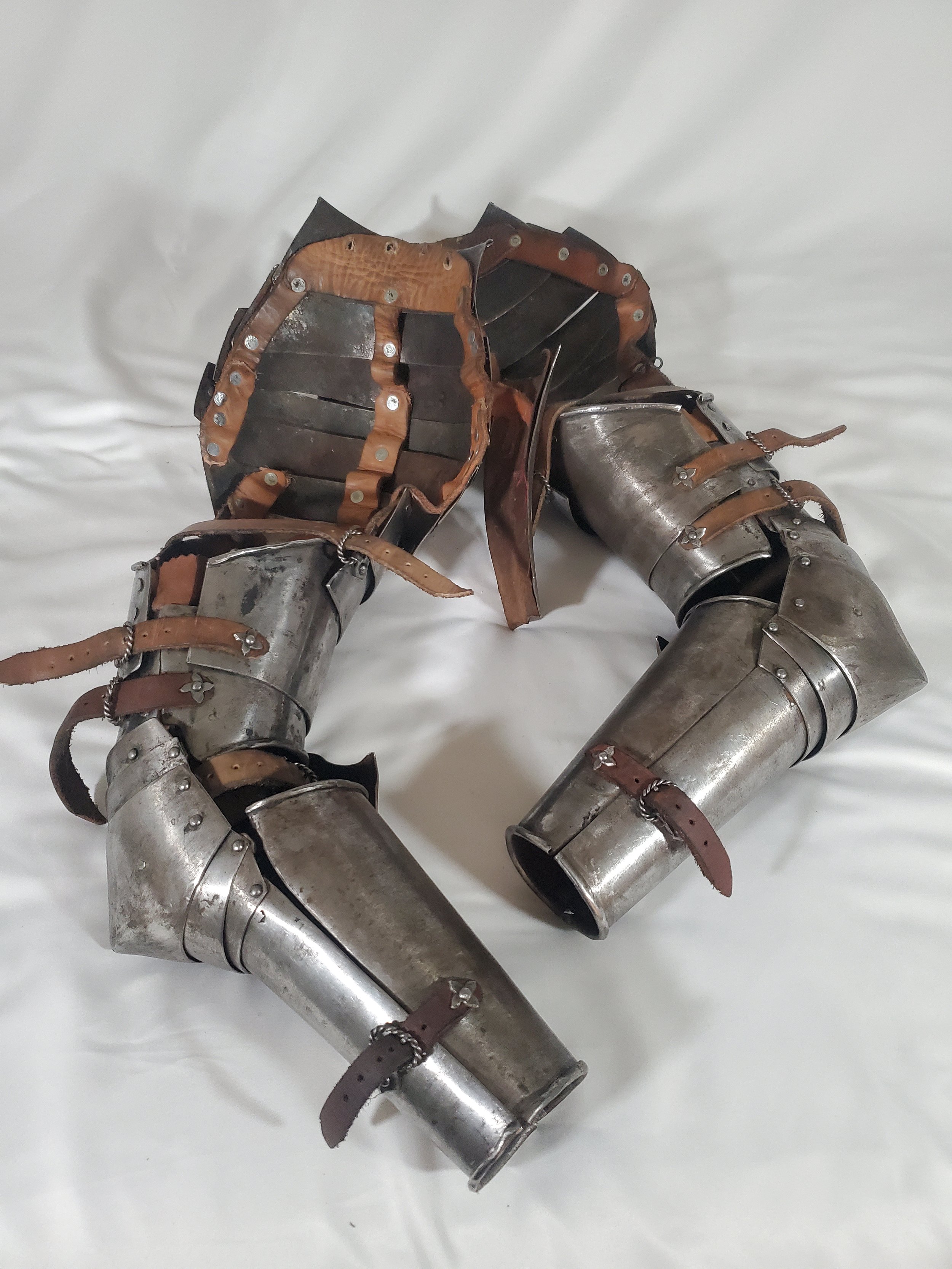
The upper torso is protected by two separate pieces, the breastplate and the placard. The two parts work as a ball and socket joint.
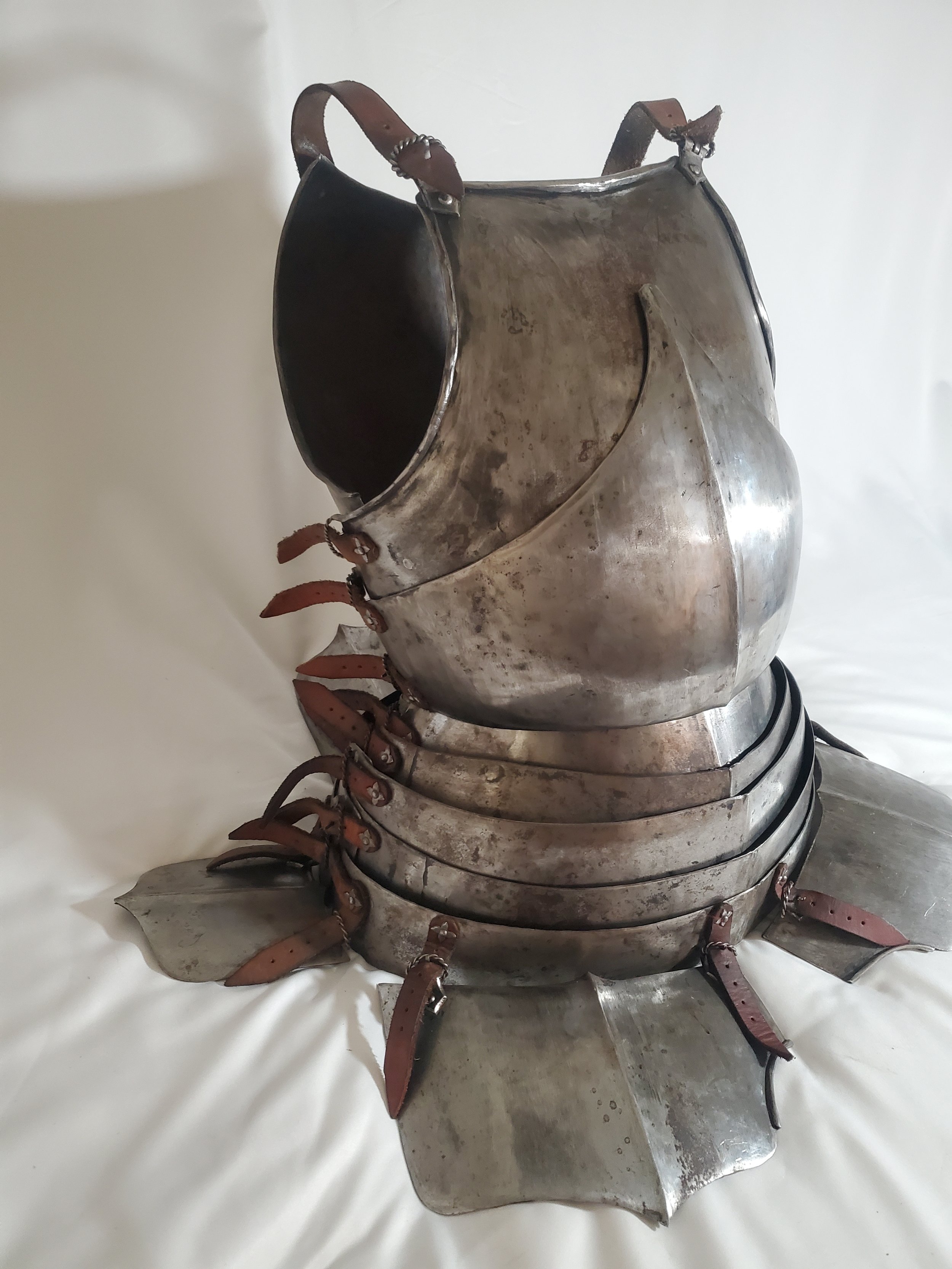
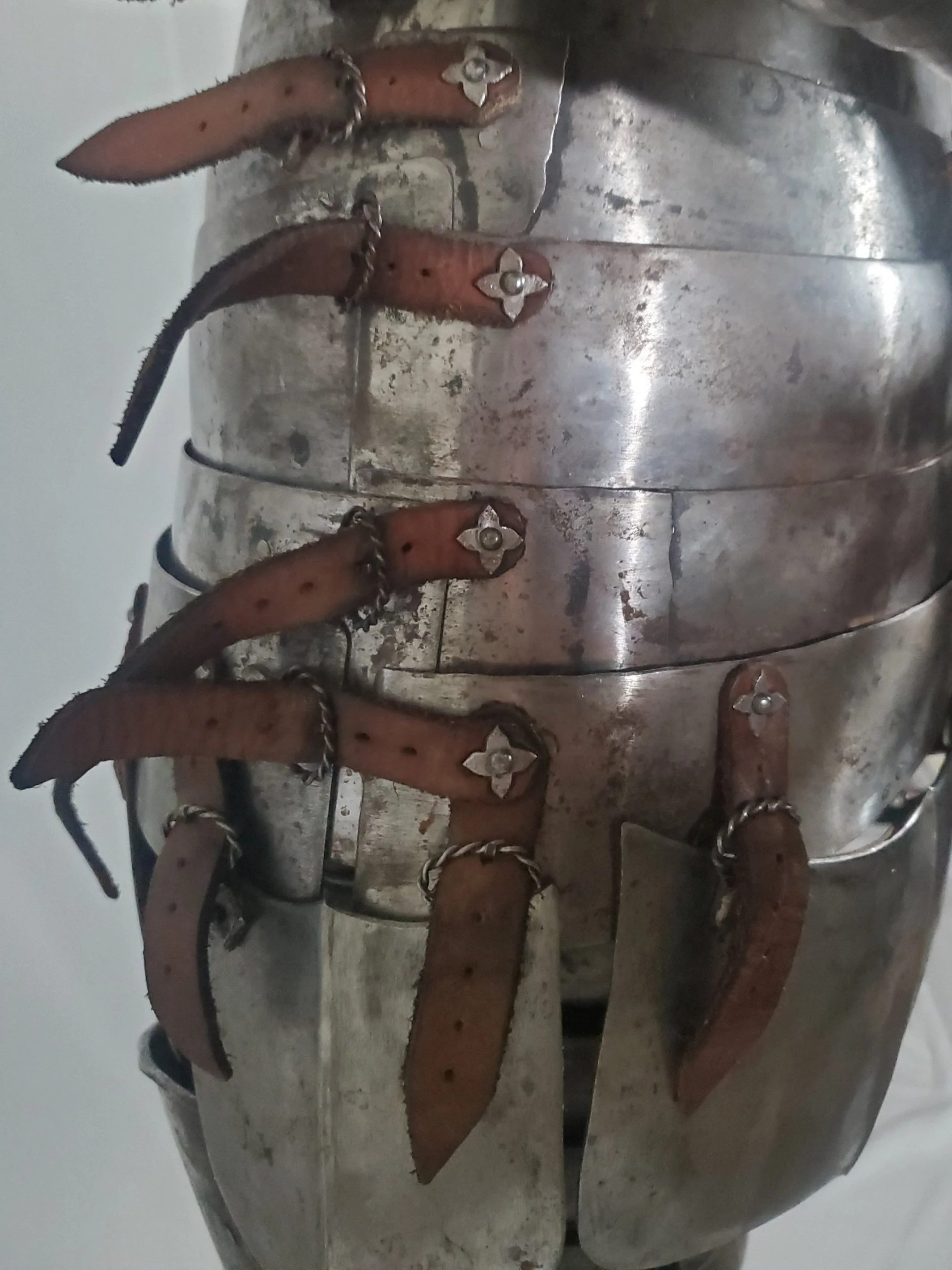
The buckles are made of wire twisted like rope. The washers on the leather straps are made from square washers with notches cut and sanded into flower petals. Decorative motifs in handmade items are sort of informed by process, and what steps are the most efficient.
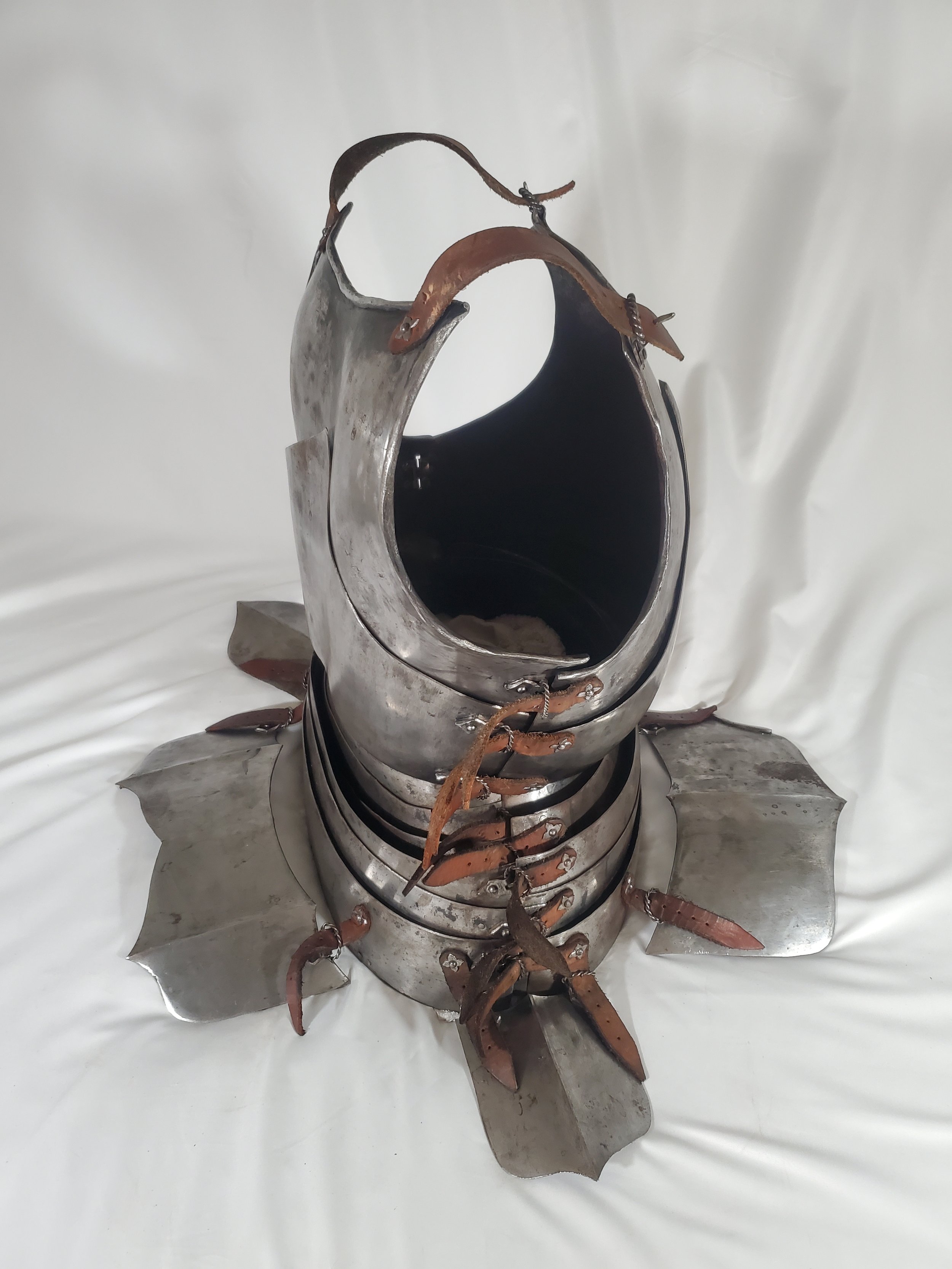

The skirt is made of a series of hoops that telescope inside each other. The marks on the inside are for assembly. You need to assemble the pieces in a specific order; otherwise, you can’t access where you need to put in a rivet.

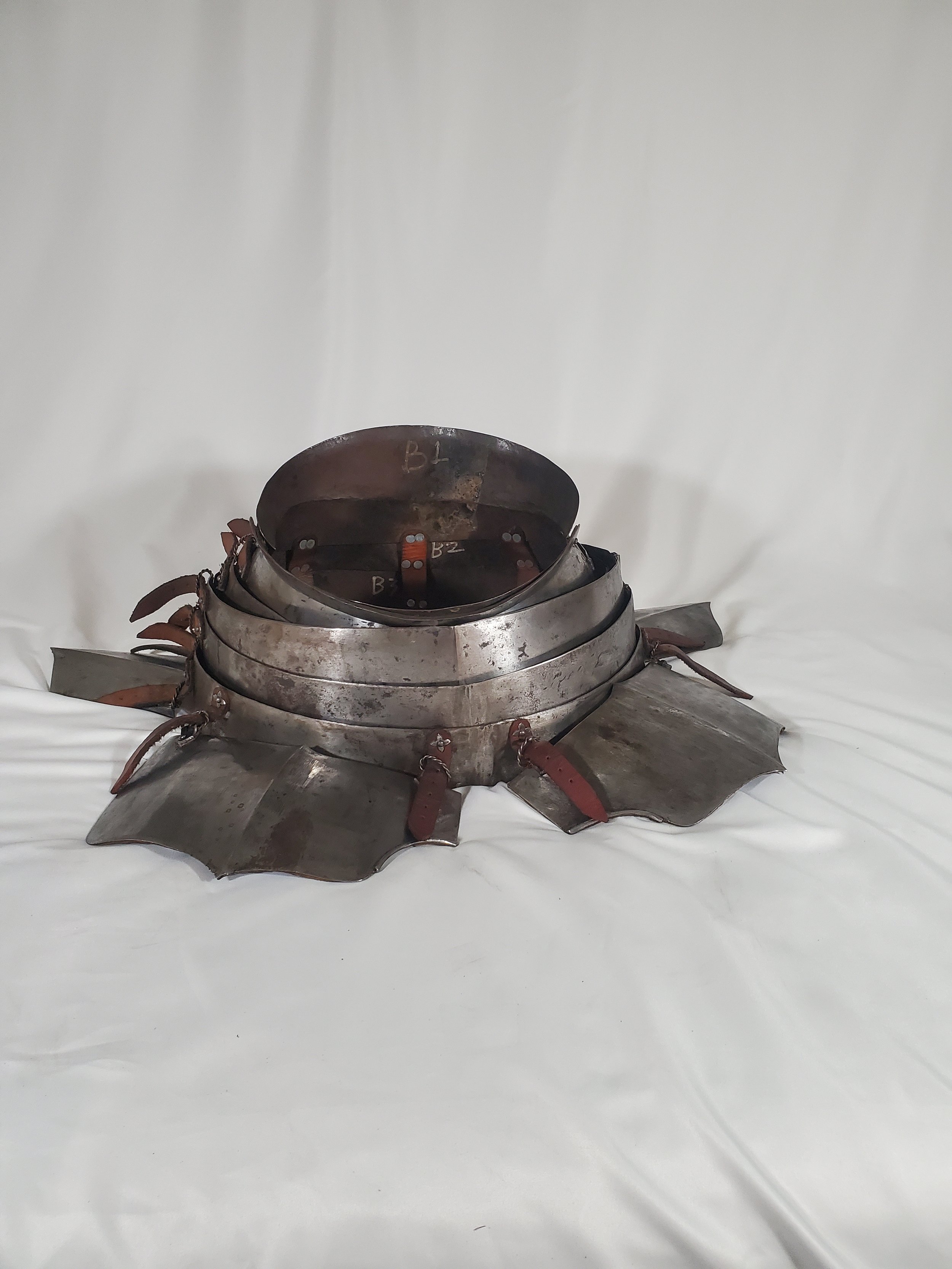
The plates hanging from the bottom of the skirt are called tassets. They work the same way as mud flaps on a truck. There attached with buckles so they can be taken off when you don’t need them.


